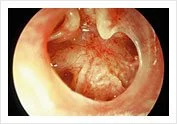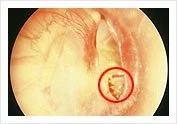Ear Infection (Otitis)
Otitis Externa
Normal Ear
Otitis Externa Furunculosis
Otomycosis (Fungus)
Microscopic Ear Procedure to clean debri and pus
Otitis Externa is common in Singapore in view of the hot humid climate.
The best treatment option is a microscopic ear examination and clearance of all the debri in the ear canal followed by the application of an appropriate anti-biotic or anti-fungal cream in addition to the use of appropriate ear drops.
Chronic Otitis Media
Chronic Suppurative Otitis Media (SOM)
Subtotal Ear Drum Perforation
Chronic middle ear infection leads to a persistent tympanic membrane perforation.
Reconstructive middle ear surgery or Tympanoplasty is advised in patients with a ear drum perforation with intact cochlea function.
However, patients with cholesteatoma need surgery to convert an unsafe ear to a safe ear to prevent intra-cranial complications.
CSOM Attic Choleasteatoma
Serous Otitis Media
Serous Otitis Media
Serous Otitis Media
Short-Term Tube
Serous Otitis Media is usually the result of eustachian tube obstruction from allergies or nose / sinus infection.
In Singapore, nasopharyngeal carcinoma has to be ruled out in adult cases.
If maximal medical therapy fails, a ventilation tube or gromet tube is inserted into the ear drum.
These can be short-term gromet or long-term T tubes.
Long-Term T Tube
Adhesive Otitis Media
Adhesive Otitis Media is more difficult to treat as the eustachian tube is not functioning well.
A hearing instrument may assist in improving hearing.
Reconstructive surgery is difficult with unpredictive results.
Adhesive Otitis Media
Tympanic Membrane Perforations
Traumatic ear drum perforations usually heal spontaneously with time.
Measures to prevent infection as in keeping the ears dry is all that is necessary.
If the ossicles are not damaged, the end result is usually good should the cochlea not be damaged.
Rarely is reconstructive surgery necessary.
Traumatic Perforated Ear Drum














